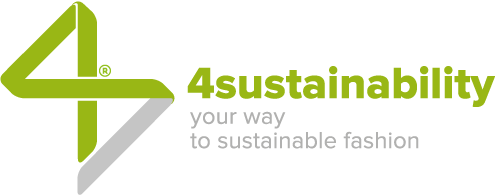Waste reduction, technological investment, recovery and recycling are the key words in the production of sustainable supply chains. And consumers can also make an important contribution through their purchasing choices.
The thunderstorms that hit several Italian regions towards the end of summer, often violent due to the tropicalization of the climate, are by no means enough to repair the damage of an out-of-the ordinary drought. Between January and July, more than 40 percent of the population was affected by drought; one-fifth, on the other hand, live in areas affected by severe or extreme long-term drought (source: Osservatorio Siccità dell’Istituto di Bioeconomia del Consiglio Nazionale delle Ricerche del CNR). This is not just a transitory condition, but a clear consequence of climate change.
The numbers of the drought emergency
Twenty-eight percent of Italy’s land area shows clear signs of deterioration, the Higher Institute for Environmental Protection and Research (Ispra) announced on the occasion of World Desertification Day 2022. WWF’s Water Risk Filter estimates that in 2030 Italy will be exposed to a risk of water scarcity rated at 2.96, on a scale ranging from 1 (very low) to 6.6 (extreme); however, scores visibly rise in large areas of the South and Islands, with Calabria at 3.66, Sicily at 4.1 and Sardinia at 3.74.
It therefore becomes a priority to manage water more rationally and efficiently, reversing the trend that has seen the world’s use of fresh water increase sixfold in the last century (source: UNESCO). Globally, agriculture is responsible for 69 percent of water withdrawals, followed by industry with 21 percent and the civil and domestic sectors with another 10 percent. The textile industry alone consumes 93 billion cubic meters of water per year (source: Ellen MacArthur Foundation, “A new textiles economy. Redesigning fashion’s future”), of which 335 thousand cubic meters per year in Italy (Istat data).
The fashion supply chain and water
There are several processes in the fashion supply chain that are characterized by high water requirements, primarily the cleaning of raw materials and the various rinsing stages. Dyeing and finishing are also critical stages, as they require up to 125 liters of water per kg of fiber (in the case of cotton) and load the water itself with toxic substances that, if not properly filtered and recovered, risk spilling into rivers and seas. Finally, massive amounts of water are also needed to cool the plants.
In recent years, technological innovation is focusing precisely on finding solutions to reduce water requirements, such as alternative solvents, more efficient machinery or sophisticated filtering processes. These are smart ways to deal with emergencies without compromising performance levels.
Virtuous approaches
So many companies in Italy’s best supply chain are distinguishing themselves through proactivity. Such is the case of the Biella-based Tintoria e Finissaggio 2000, which as early as the 1970s is been investing in an effective purification plant to improve its performance over time. The most recent innovation is the integration of advanced technology for the wastewater microfiltration: once treated, it is partly recovered and reintroduced into other internal processing, and partly returned “clean” to the environment. In terms of volumes, we are talking about 100 thousand cubic meters of purified water per year, with about 10 percent recycled water from purification. In fact, despite belonging to a sector physiologically forced to make extensive use of chemicals, this company was the first in Italy to achieve an excellent rating in the chemical management protocol of 4sustainability, the implementation framework and registered trademark that guarantees the sustainability performance of the fashion & luxury supply chain.
Among the more than two hundred companies that have relied on 4sustainability is Creazioni Digitali, the first company in the Como district to deal with digital sublimation printing, the only one in Italy to adopt the innovative printing technologies of the Israeli multinational Kornit Digital. The new machinery makes it possible, on the one hand, to reduce the consumption of water needed to print fabrics and, on the other, to shorten the supply chain by concentrating several steps within the same plant. The numbers are staggering, according to associated studies: when compared to regular digital printing, a water smart print would save 5,000 liters of water for every 1,000 linear meters of fabric.
Another excellent case, for its intelligent approach to rationalizing water consumption, is Gruppo Colle, whose efforts can be summarized basically in three keywords. The first is control, to reduce waste at all levels by optimizing water use to what each process actually requires (and not all processes, nor all materials, require the same quantities to maintain the same product quality). Then there is technology, on which Gruppo Colle constantly invests by collaborating with leading dyehouse equipment manufacturers such as Loris Bellini and Laip: the innovation numbers are significant, if we think that the latest generation of machines guarantees water savings of between 30% and 40%. The third is recovery, practiced not only at the company level but, intelligently, at the district level. The Prato district is a historical excellence that sets the standard because it multiplies results, with its integrated system for water purification and recycling among the most extensive and efficient in Europe.
Voice to insiders
“The issue is not only environmental,” highlights Francesca Rulli, Ceo and Founder of Process Factory and creator of the 4sustainability framework. “The correlation with social and governance aspects makes the issue much more complex. I try to explain myself simply. In order to reduce the use of resources such as water, the supply chain needs innovation and production volumes; for this we need structured development plans supported by financial aid, as well as a more equitable distribution along the value chain (brands, manufactures, sub contractors, and so on). At the same time, style and design must convert to the development of sustainable garments by being aware of the impact that each choice adopted at the design stage can have on production and thus preferring materials, processes and suppliers that can reduce this impact, for example in water use. The two dynamics are linked: the more production focuses on sustainable supply chains by recognizing their value, the more volumes allow to invest in innovation.”.
10 tips for the responsible consumer
In these months of chronic drought, citizens have also been urged to limit waste, for example by installing a flow reducer in home faucets, remedying any leaks or reusing water wherever possible. There are also several ploys to reduce the water footprint associated with the clothes one wears. Rulli, who is also author of the book Fashionisti consapevoli. Vademecum della moda sostenibile (Flaccovio editore), suggests ten of them:
- When doing laundry by hand, collect water in the basin while leaving the faucet open the minimum amount necessary.
- When buying a new washing machine, also check the estimated annual water consumption: it is indicated on the energy label.
- Wash laundry at low temperatures: the most modern detergents and machines guarantee excellent results even at 30 or 40 degrees.
- Use the detergent cap as a dispenser, limiting yourself to the amount recommended in the package: extra detergent is not needed to clean better, so why waste it?
- Start the washing machine only at full load or, if there are few clothes, opt for the “half load” program.
- Consider dry cleaning for certain types of garments, such as ties, men’s suits and coats
- Put garments in the washing machine only when they are actually dirty: according to one major global denim brand, a pair of jeans can be worn at least ten times before being washed!
- Among synthetic fibers, favor viscose over polyester: according to the Water Footprint Institute, it has a lower water footprint.
- When buying a cotton garment, check that it is organic (look for the GOTS or OCS label) or recycled (GRS or RCS labels). Conventional crops, in fact, are heavily irrigated to maintain productivity, as well as making considerable use of pesticides.
- Keep away from disposables and extend the useful life of clothes as much as possible by repairing them if they get damaged or reselling them when we haven’t worn them for too long.
“Do we really need all the items in our closet? Do we know that the water consumption required to produce what we wear changes from product to product? How many questions do we ask ourselves when making purchases? Production processes,” Rulli stresses, “are evolving to reduce environmental impacts, but it is equally essential that more and more consumers become accustomed to finding the information they need to make informed choices about what and how to buy, adopting more responsible behaviors even in post-purchase maintenance. The more consumers become discerning in their demands on the market, the more brands will change the way they produce, moving toward greater environmental and social sustainability”.

